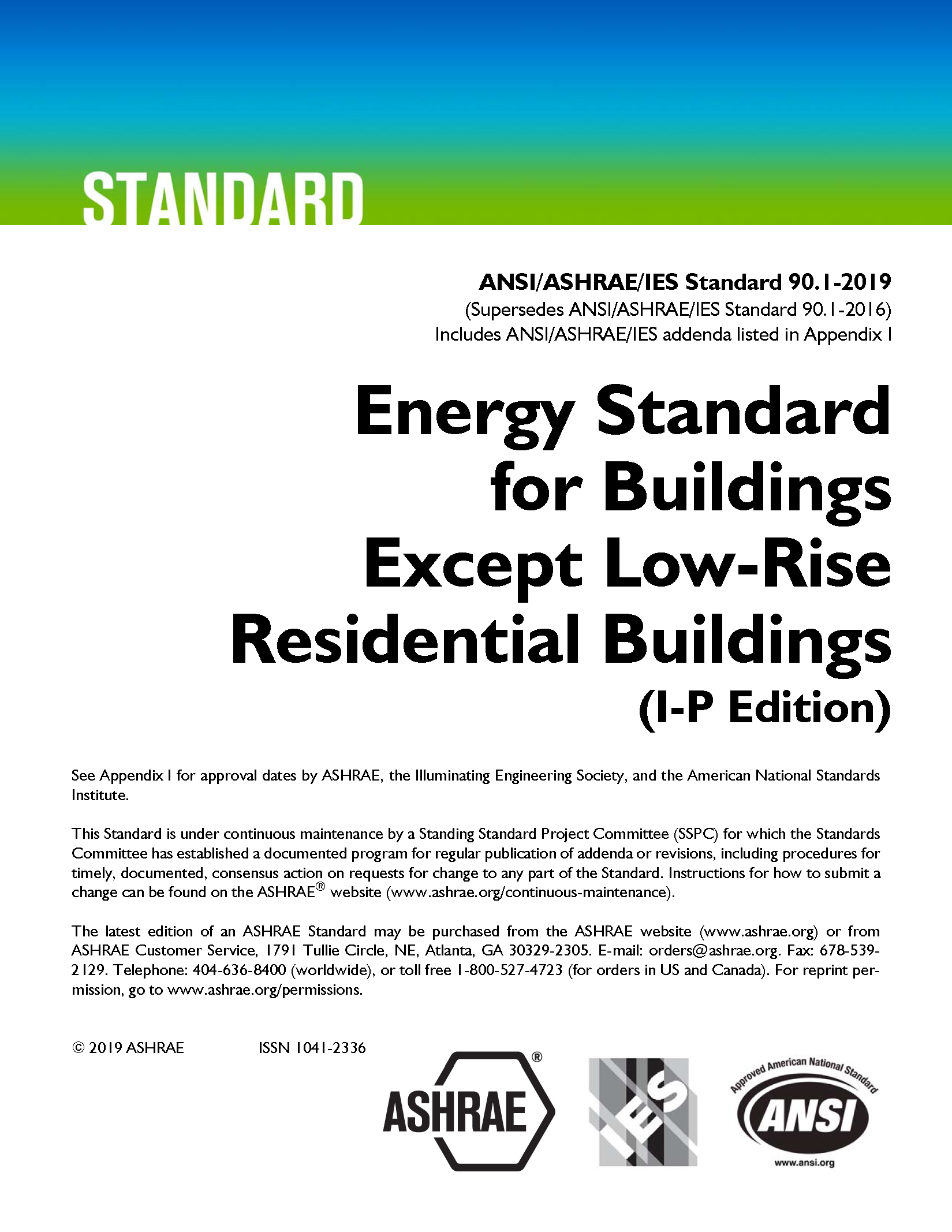Standard 90.1
2019 Update Focuses on Energy-Saving Measures, Addresses Fan Efficiency, Pump Requirements
From HVAC&R Industry Newsletter, October 31, 2019
The latest edition of ASHRAE’s most prolific energy standard includes more than 100 updates since the last edition was published in 2016. The newly updated ANSI/ASHRAE/IES Standard 90.1-2019, Energy Efficiency Standard for Buildings Except Low-Rise Residential Buildings, includes new and updated equipment efficiency requirement tables and a clearer compliance path for renewable energy treatment.
The expanded, revised version of the energy standard focuses on energy-saving measures the Standard 90.1 committee hopes will help designers create more energy-efficient buildings.

“The goal of the 2019 version of 90.1 was to provide clearer guidance for exceeding efficiency goals,” said Drake Erbe, Member ASHRAE, chair of the Standard 90.1 committee. “This new version focuses on energy-saving measures which we hope will reward designs for achieving energy cost levels above the standard minimum and result in more efficient buildings and more innovative solutions.”
From energy efficiency requirements for design and construction of new buildings and their systems to compliance criteria, the standard provides minimum requirements for energy-efficient design for most buildings. For more than 35 years, Standard 90.1 has been a benchmark for commercial building energy codes for the United States and a key basis for codes and standards around the world.
The energy standard can be viewed in ASHRAE’s online 90.1. Portal, a multiple-publication online tool that brings together the standard, User’s Manual guidance and tools.
Significant changes to the 2019 version include:
Administration and Enforcement
New commissioning requirements in accordance with ASHRAE/IES Standard 202, Commissioning Process for Buildings and Systems
Building Envelope
-
Combined categories of “nonmetal framed” and “metal framed” products for vertical fenestration
-
Upgraded minimum criteria for SHGC and U-factor across all climate zones
-
Revised air leakage section to clarify compliance
-
Refined exceptions related to vestibules, added new option and associated criteria for using air curtains
Lighting
-
Modified lighting power allowances for Space-by-Space Method and the Building Area Method
-
New simplified method for lighting for contractors and designers of renovated office buildings and retail buildings up to 25,000 ft2 (2300 m2)
-
Updated lighting control requirements for parking garages to account for the use of LEDs
-
Updated daylight-responsive requirements, added definition for “continuous dimming” based on NEMA LSD-64-2014
-
Clarified side-lighting requirements and associated exceptions
Mechanical
-
New requirements to allow the option of using ANSI/ASHRAE Standard 90.4-2016, Energy Standard for Data Centers, instead of ASHRAE Standard 90.1 in computer rooms that have an IT equipment load larger than 10 kW
-
Added pump definitions, requirements, and efficiency tables to the standard for the first time
-
New equipment efficiency requirement tables and changes to existing tables
-
Replaced fan efficiency grade (FEG) efficiency metric with fan energy index (FEI)
-
New requirements for reporting fan power for ceiling fans and updated requirements for fan motor selections to increase design options for load-matching variable-speed fan applications
-
New energy recovery requirements for high-rise residential buildings
-
New requirement for condenser heat recovery for acute care inpatient hospitals
Energy Cost Budget (ECB) Method (Section 11)
Performance Rating Method (Appendix G)
-
Clarified Appendix G rules and corresponding baseline efficiency requirement when combining multiple thermal zones into a single thermal block
-
New explicit heating and cooling COPs without fan for baseline packaged cooling equipment
-
New rules for modeling impact of automatic receptacle controls
-
Set more specific baseline rules for infiltration modeling
-
Clarified how plant and coil sizing should be performed
-
Updated building performance factors
Both Compliance Paths